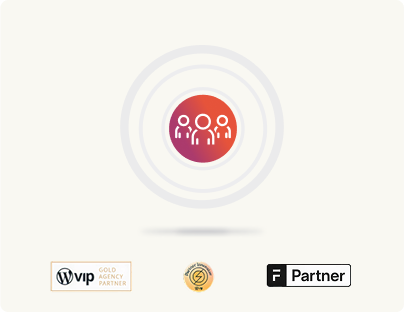Bringing enterprise-scale personalization to WordPress
After CMS and DAM, personalization is easily the third-most important feature that enterprises look for in a DXP. Rightly so—it’s only when you add personalization to your content delivery that it feels truly relevant to your audience.
With personalization, every touchpoint of your user journey becomes meaningful, engaging, and, well, “personalized” to the individuals’ needs.
Enterprises typically add personalization in layers based on various factors such as user behavior, preferences, and previous interactions. For example:
- Personalizing content based on user location
- Displaying content recommendations based on browsing history
- Customizing messaging or offers based on user engagement levels
Basic personalization in WordPress using built-in hosting features/CDNs
One of the simplest forms of personalization in WordPress is location-based content delivery—often included with enterprise WordPress managed hosting services or powered by Content Delivery Networks (CDNs). By detecting a user’s geographic location, you can dynamically adjust content to improve relevance and engagement without requiring complex integrations or heavy processing on your WordPress site.
With this personalization, your WordPress site can serve region-specific content, language variations, or localized promotions based on a visitor’s IP address. For example, you can automatically display:
- Localized pricing based on a user’s country
- Region-specific banners, offers, or announcements
- Different languages or currency formats
- Region wise service availability
Unlike proprietary DXPs that often require costly, complex integrations for even basic personalization, WordPress enables lightweight, CDN-powered personalization with minimal setup. You can implement this by using geolocation-based caching rules, plugins, or simple theme customizations—without sacrificing performance.
While more advanced personalization may involve behavior tracking, dynamic content rules, or AI-driven recommendations, CDN-powered location-based personalization is one of the easiest and most efficient ways to tailor content—making WordPress a flexible, cost-effective alternative to traditional DXP solutions.
Personalizations using user behavior: Delivering relevant experiences
WordPress enables personalized content delivery by leveraging user behavior data—such as page views, clicks, and time spent on specific pages. This allows you to create dynamic, tailored experiences based on how users interact with your site.
Unlike proprietary DXPs like Sitecore and AEM, WordPress enables behavior-based personalization without hefty investments or vendor lock-in. It integrates seamlessly with a wide range of third-party tools, including Google Analytics, to track user behavior and provide the data needed for personalization. You can then implement rule-based personalizations using custom code or plugins—without being restricted to a closed ecosystem.
In contrast, Sitecore and AEM lock you into their proprietary systems. Their built-in tracking solutions often require additional investment in their analytics tools or integration services, limiting flexibility and scalability as your needs evolve.
With WordPress, you can deliver personalized, behavior-driven content without the constraints of expensive, proprietary systems. By integrating with the tools that best suit your needs, WordPress offers a highly customizable, scalable alternative to traditional DXPs.
Advanced personalization with CDPs and CRM integration: Delivering highly contextual experiences
For even more granular personalization, WordPress can integrate with Customer Data Platforms (CDPs) and Customer Relationship Management (CRM) systems. These systems enable a deeper understanding of user behavior, preferences, and historical interactions, allowing you to deliver contextual content, product/service recommendations, and targeted offers based on comprehensive customer profiles.
Now, you might think that these are additional solutions you need to invest in.
It’s true: They are.
But if you see the advanced personalizations offered in proprietary DXPs like Sitecore and AEM, you’ll see that even they depend on their CRM and CDP solutions. And you need to invest in them as well.
WordPress, on the other hand, allows seamless integration with a wide variety of CDPs and CRM systems, including both open-source solutions and enterprise systems like Salesforce or HubSpot. This provides you with a flexible, scalable solution that avoids vendor lock-in.
Advanced personalization tools for WordPress
Beyond basic personalization, WordPress integrates easily with most third-party personalization solutions.
WordPress also has its own specialized partners like Piano and Sailthru for businesses looking for even deeper personalization capabilities natively in WordPress. These platforms work seamlessly with WordPress to deliver behavior-based personalizations, AI-driven content recommendations, and automated audience segmentation. By leveraging these solutions, you can tailor content experiences with precision—without needing to migrate to a proprietary DXP.
Enterprise WordPress hosting providers also offer native personalizations through integrated solutions. Parse.ly, for instance, comes natively integrated with WordPress VIP, the enterprise WordPress hosting platform. It provides a robust content API allowing businesses to personalize content dynamically based on real-time engagement metrics.
Beyond advanced personalization: Personalization at scale using AI-driven, real-time insights
For enterprises operating at the highest level of personalization maturity, AI-powered real-time personalization based on deep behavioral insights becomes essential.
However, most DXPs struggle to offer this level of sophistication with their personalization solutions. While they provide built-in personalization features, they often lack real-time AI capabilities and the flexibility needed to handle complex, industry-specific needs.
This limitation becomes even more apparent in highly regulated industries like healthcare, where compliance with data protection regulations (HIPAA, GDPR, etc.) is critical. Many proprietary DXPs do not offer the level of compliance or customization required to meet these stringent standards. In such cases, enterprises benefit from combining WordPress with specialized personalization platforms—ensuring both cutting-edge personalization and regulatory compliance without vendor lock-in.
Wrapping it up…
Unlike traditional DXPs that lock you into proprietary ecosystems, WordPress provides a flexible, scalable approach to personalizations—allowing you to design your own personalization framework layer by layer, ranging from simple, location-based adjustments using CDNs to leveraging Parse.ly’s content API for engagement-based recommendations and advanced personalizations through integrations with the best-in-class personalization solutions or WordPress-optimized partners like Piano, and Sailthru.
This modular approach means you can start small and scale as needed, integrating with AI-driven solutions as you need. Unlike DXPs that force you into a predefined ecosystem, WordPress gives you the freedom to build a personalization stack tailored to your audience, business model, and compliance needs—without vendor lock-in.







